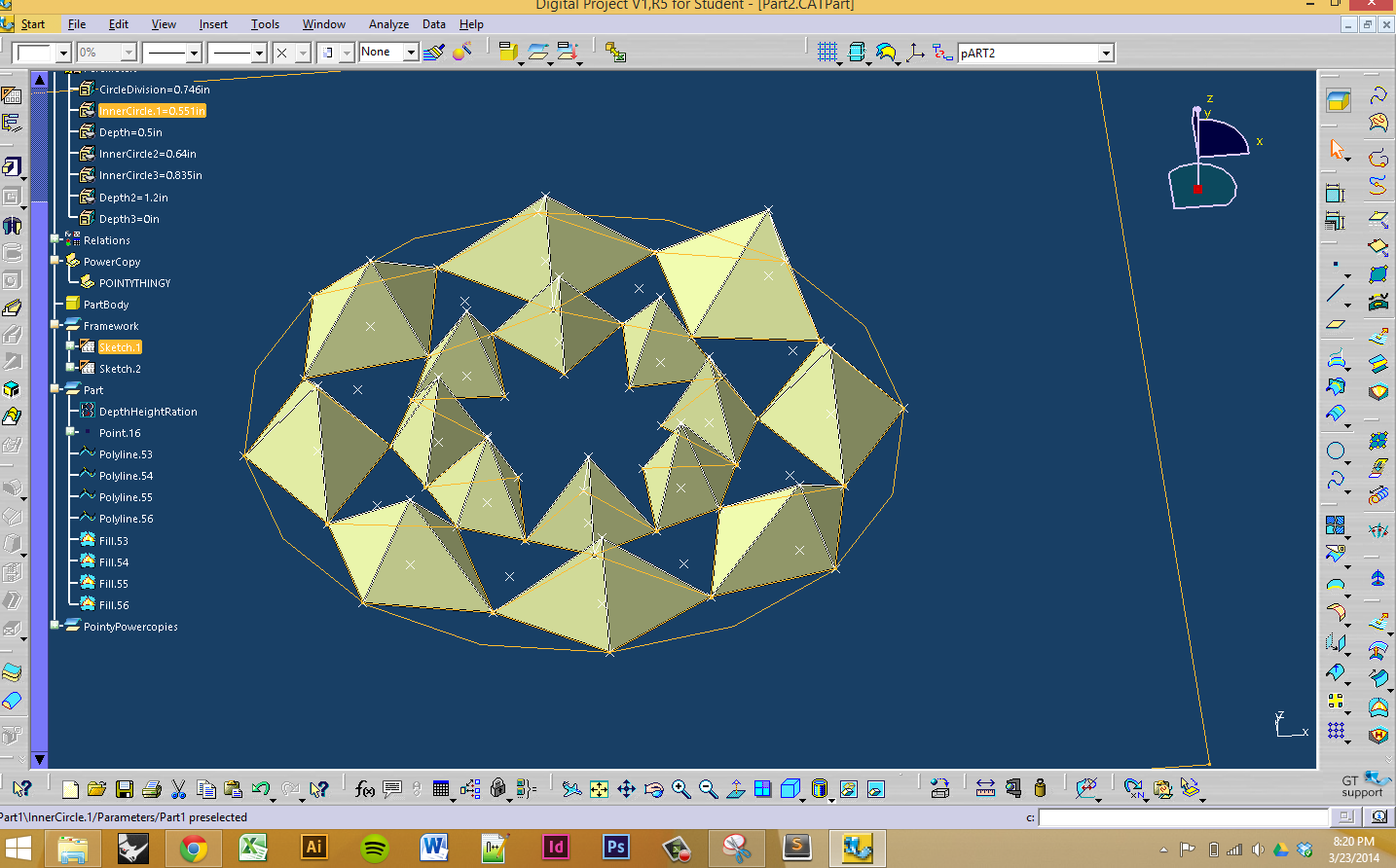So I started with two multi-section surfaces controlled by curves
and projected a grid of points onto the surface.
This was my module, driven by eight non-planar points as inputs.
I couldn't get the power copies to work because my forms were in different geometrical sets. Instead, I made a product file with global parameters and a document template. I imported the template into the part, and the inputs were the 8 points and matching parameters, so I could change them after. I could also go into the sketch, changing the multi-section surface and the spacing/shape of the projected grid. TA DA.




















































